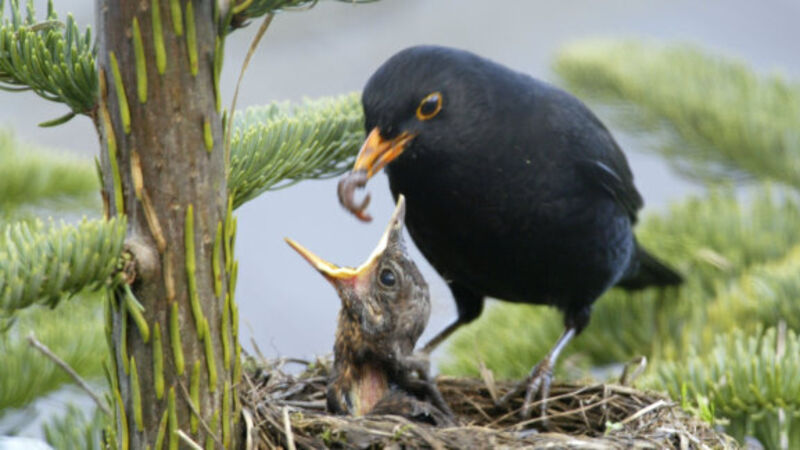Blackbirds battle for territory

Most of the initial arguments are expressed by hopping along the lawn in a series of tightly choreographed patterns. The main manoeuvre consists of hopping in a straight line, parallel to each other and about a metre apart. Their yellow-ringed eyes are placed on the sides of their heads so this allows them to glare at each other as they hop. Then they’ll turn to face each other and make bowing gestures. Sometimes this is followed up by a charge, though they usually contrive to miss their opponent by a safe distance. Occasionally the charge is pressed home and both birds ascend vertically into the air, slapping each other with their wings.
This has been going on for the best part of a week, with no apparent injuries and no apparent victor. Many of the movements they make on the ground are oddly similar to the initial stages of the red deer rut, when rival stags trot parallel to each other before turning face to face and roaring.
I went to the internet to try and learn more. Apparently research has shown that beak colour is a significant factor. Male blackbirds respond most aggressively to rivals with orange beaks and less so to those with yellow ones. They hardly respond at all to ones with brown beaks, which are likely to be either juveniles or females. Female blackbirds seem totally unmoved by the colour of a male’s beak but the research claims they prefer males with shinier beaks.
All of this, of course, will culminate in mating and breeding. Blackbirds build solid, cup-shaped nests that are lined with a cement made from mud mixed with saliva. Only the female does the nest building. The site chosen is usually in a dense hedge or bush, sometimes in thick ivy. Occasionally they will nest in buildings or in large, open-fronted nest boxes.
The usual number of eggs is four and there are often two broods in the season. If the female lays a second clutch of eggs the male will take over the duties of feeding the fledglings from the first brood. The eggs are blue-green with rust-coloured spots, concentrated towards the blunt end of the egg Blackbirds are widely distributed in Ireland and are among the top 20 commonest species in BirdWatch Ireland’s Garden Bird Survey. The Irish resident population is augmented in winter by migrants from Scandinavia and Germany. They are among our finest songsters.













